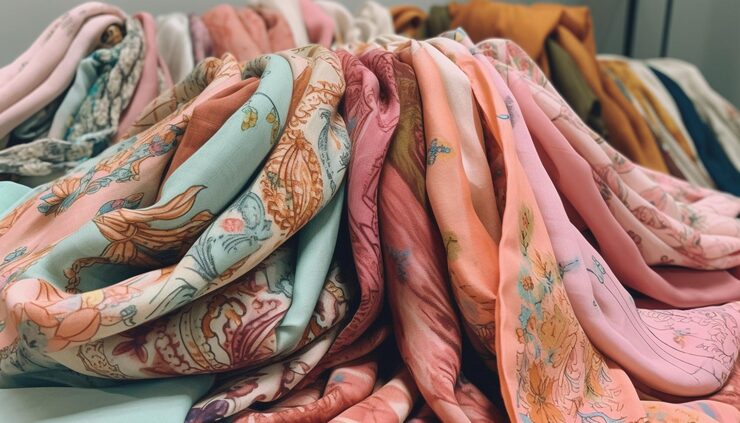Rules and meanings of headscarf for Muslim women
What are the rules of being a hijab
Introduction: The connection between headscarf and faith
For many Muslim women, wearing a headscarf (Hijab) is not only a cultural custom, but also a manifestation of their faith. The wearing of headscarf may have
different forms and rules in different cultures, but at its core it always revolves around modesty, respect and faith. This article will explore the basic rules of
wearing headscarf and the deeper meaning behind these rules.
Definition of headscarf and religious background
1. Definition of headscarf
Hijab usually refers to a piece of cloth that covers the hair, neck and part of the shoulders, designed to protect the modesty and privacy of women. There are
many types of headscarves, and the styles and wearing methods vary from region to region and culture, ranging from simple scarves to complex shawls.
2. Religious background
According to the Quran and Hadith (the sayings and deeds of the Prophet Muhammad), Muslim women are required to cover their hair and certain parts of their
bodies in public. This requirement reflects Islam's emphasis on modesty and respect, and is intended to protect the dignity of women.
Basic Rules for Wearing Hijab
1. Covering the Hair and Body
The first rule of wearing hijab is to cover the hair and certain parts of the body. According to traditional teachings, women should cover their hair, neck, chest,
and body curves to avoid attracting the attention of others. Although the requirements for body covering may vary from school to school and culture to culture,
this rule is generally applicable.
2. Choose the right material
When wearing hijab, it is also very important to choose the right material. Natural materials such as cotton and silk that are breathable should be chosen as
much as possible to ensure comfort and decency. Avoid synthetic materials as they may cause discomfort and overheating, which will affect the wearing
experience.
3. Flexibility in wearing style
The way hijab is worn can vary according to culture, personal style, and occasion. Women can choose different styles and designs according to their preferences
as long as they meet the basic requirements of covering. For example, many women choose more ornate styles for formal occasions, while they may choose
simple and comfortable styles for daily life.
4. Keep it neat and modest
Women who wear hijab should keep their hijab neat and modest. This not only shows respect for yourself, but also for others. It is the responsibility of every
wearer to wash and properly store the headscarf regularly to ensure that it is kept in good condition.
5. Personal confidence and comfort
Wearing a headscarf should be a personal choice, not pressure from others. Women should consider their comfort and confidence when choosing to wear a
headscarf. Respecting your own choices and feelings can better show your personal style.
Social and cultural significance of wearing a headscarf
1. Social identity and cultural identity
Wearing a headscarf has important social identity and cultural identity significance in many Muslim communities. It is an important symbol of the identity of
Muslim women, reflecting loyalty to faith and respect for cultural traditions. In many cultures, wearing a headscarf is also a way to stay connected with family and
community.
2. Fighting stereotypes
In modern society, Muslim women face many stereotypes and misunderstandings. By actively showing the beauty and confidence of wearing a headscarf, women
are not only conveying their personal style, but also fighting against prejudice against them. This expression of confidence can help break down cultural barriers
and promote understanding and respect between different cultures.
3. The embodiment of women's autonomy
The choice of wearing a headscarf embodies the concept of women's autonomy. In many cases, Muslim women are not forced to wear headscarves, but out of
their understanding and choice of faith. This freedom of choice reflects the active position of women in religious and social life and shows their recognition of
their own identity.
Conclusion: The beauty and power of headscarves
Wearing a headscarf is not only to follow religious rules, but also a way for every woman to show her faith, culture and personality. In modern society, the wearing
of headscarves carries rich cultural significance and personal stories. By understanding the rules of wearing headscarves and the deeper meaning behind them,
we can better respect and understand the choices of Muslim women. Whether in the hot sun or in busy life, headscarves not only protect their dignity and privacy,
but also show their inner strength and confidence.




